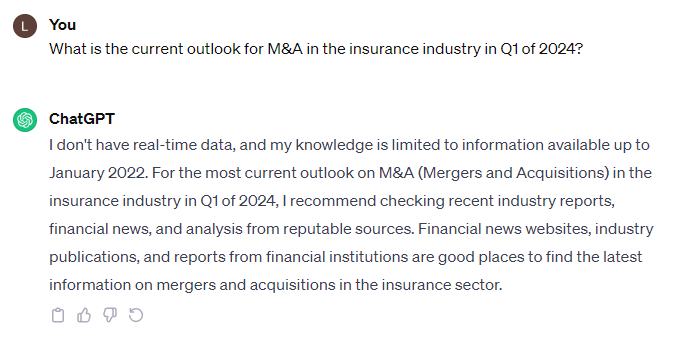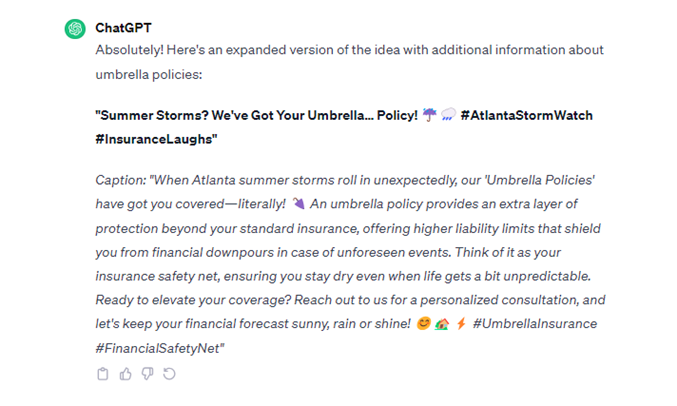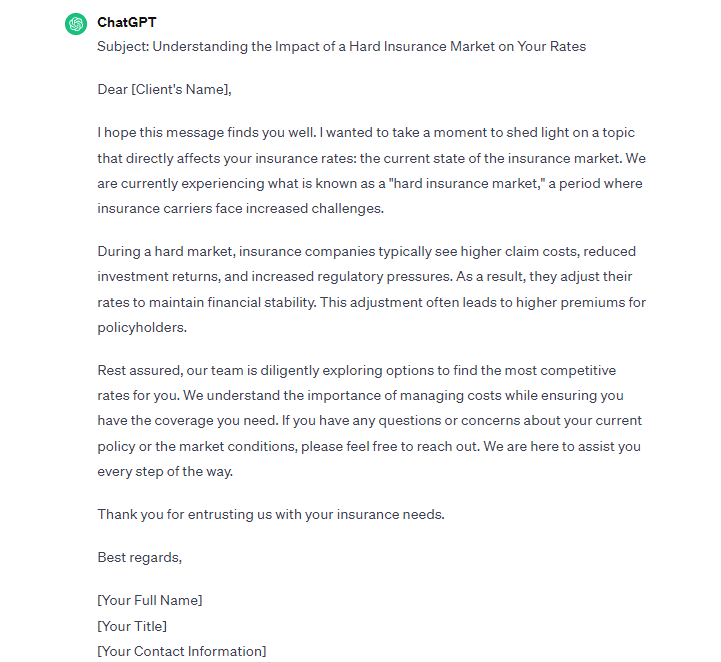The dos and don'ts when working with Gen AI
Setting a foundation by understanding how Gen AI works will ensure personal, client, and agency information is protected.
Protect your data
Information input into Gen AI is saved to improve the AI's accuracy over time. Removing identifiable information (PII) like social security numbers, company names, or financial information, will ensure you keep sensitive information out of the software. For example, instead of saying “John’s Insurance Agency…”, just say “Company Y…”. This way, the system has the information it needs to help you craft content, while keeping it vague enough so it can’t be traced back.
Take a lesson learned from Samsung employees last year when they inadvertently leaked sensitive company data by entering code into ChatGPT. Because the large language models are created to generate responses to questions using learned data, Gen AI may expose confidential information unintentionally. While you may not be worried about code, agents deal with sensitive client information daily, so reading through the language or data you are entering into the system twice before hitting submit will help keep you on the safe side.
Pick a version to use
The ChatGPT-3.5 model – the free version currently available – can only pull information up to January 2022. So, if you are looking for timely research around last year’s hurricane data or auto insurance trends for example, Google will be a better resource. The ChatGPT-4 model ($20/month) is the paid version and can pull information up until mid-2023. Here is an example of a response you may get if you are looking for recent information. *Keep in mind these dates fluctuate as time passes.
Check for accuracy
Living in the digital age of fake images, constant fact-checking and endless online chatter, our society is becoming more familiar with checking multiple sources for accurate information or second-guessing news that may pop up on Facebook or Instagram feeds. Gen AI is no different.
Gen AI can sometimes make things up, this is called a hallucination. New research found chatbots invent information at least 3 percent of the time — and as high as 27 percent. For example, a lawyer for a man suing an airline in a routine personal injury suit used Gen AI to prepare a filing, but the bot delivered cases that didn’t exist which the attorney then presented to the court. This mistake could have been easily caught with some quick research online to confirm accuracy.
Avoid unintentional plagiarism
Although Gen AI can create initial drafts or provide ideas, it’s up to the user to review and edit the content to incorporate insights, ideas, and expertise. Tailor the content to your unique perspective and voice, making sure it matches your intentions.
Gen AI can help craft content or brainstorm new ideas, but it’s up to the user to keep sensitive data out of the system, confirm accuracy, and personalize responses.
How to write a good prompt
Now that we have some understanding of ways Gen AI works, and security advisories to be aware of, let’s have some fun.
Writing a good prompt – the keywords and phrases you enter in Gen AI to spark a reply – can take some practice. Insurance agents are seeing results by being specific in their prompts, setting the stage and providing context, telling the software who it is (like an insurance agent with 15+ years of experience) to set the scene, and staying conversational, writing feedback and making clarifying statements to see the result you want.
Some of the most popular ways agencies are using Gen AI today is to help create content like social media posts, or crafting client e-mails. Here are three prompt examples independent agents are using to show how much detail goes into writing a prompt to get the best response possible, and the conversation that follows to fine tune the response to your liking.





